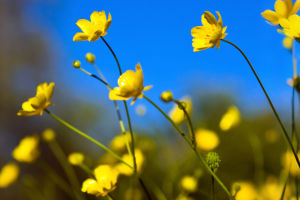
Hey Lykkers, today we're going to talk about how to grow beautiful ranunculus, turning your garden instantly into a "social media hotspot"! Ranunculus—doesn't the name sound a bit fancy?
Actually, it's what we commonly call "Persian buttercup," with large flowers and vibrant colors, truly the "beauty standard-bearer" of your garden. However, growing it isn't so simple—you need some little tricks.
Choose the Right Variety
Ranunculus, also known as "buttercups" or "Persian buttercups," come in many varieties, including single-petaled and double-petaled types, with colors ranging from red, yellow, pink, to white.
For beginners, double-petaled varieties are recommended because they have larger, more eye-catching flowers and are easier to care for. When selecting a variety, consider your garden's environment—some prefer full sun, while others thrive in partial shade.
Soil Matters: Keep It Loose and Rich
Ranunculus are picky about soil. They prefer loose, well-draining soil rich in organic matter. You can mix garden soil, leaf mold, and sand in a 2:2:1 ratio to create the perfect blend. Avoid clay soil, as it retains too much water and can cause root rot. If mixing your own soil sounds like too much work, you can buy pre-made potting soil for flowers.
Water Wisely: Don't Overdo It
Ranunculus like moist soil but can't handle being waterlogged. In spring and fall, watering once a week is usually enough. In summer, you may need to water more frequently, but avoid daily watering. During winter, when the plant is dormant, reduce watering and keep the soil slightly dry. Always water thoroughly to ensure the roots get enough moisture.
Light: Balance Sun and Shade
Ranunculus love sunlight but can't tolerate intense heat. In spring and fall, place them in a sunny spot. In summer, provide some shade to prevent leaf burn and wilting. In winter, move them to a sunny windowsill to ensure they get enough light. The key is to provide balanced light—not too much, not too little.
Fertilize Moderately: Don't Overfeed
Ranunculus don't need a lot of fertilizer, but they do benefit from occasional feeding. During the growing season, apply a diluted liquid fertilizer every two weeks. Before flowering, increase phosphorus and potassium to promote blooming. Avoid over-fertilizing, as it can harm the plant, but don't neglect it either—starved plants produce fewer, smaller flowers.
Prune Regularly: Keep It Tidy
After the flowering period, prune away dead flowers and leaves to conserve the plant's energy for new growth. Don't hesitate to trim—overgrown plants can look messy and affect future blooms. After pruning, apply a light fertilizer to help the plant recover and prepare for the next blooming season.
With the right care, ranunculus can transform your garden into a stunning "Instagram-worthy" space. Choose the right variety, provide well-draining soil, water wisely, and balance light and fertilizer. Regular pruning and pest control will keep your plants healthy, while proper winter care ensures they return year after year. Happy gardening!


